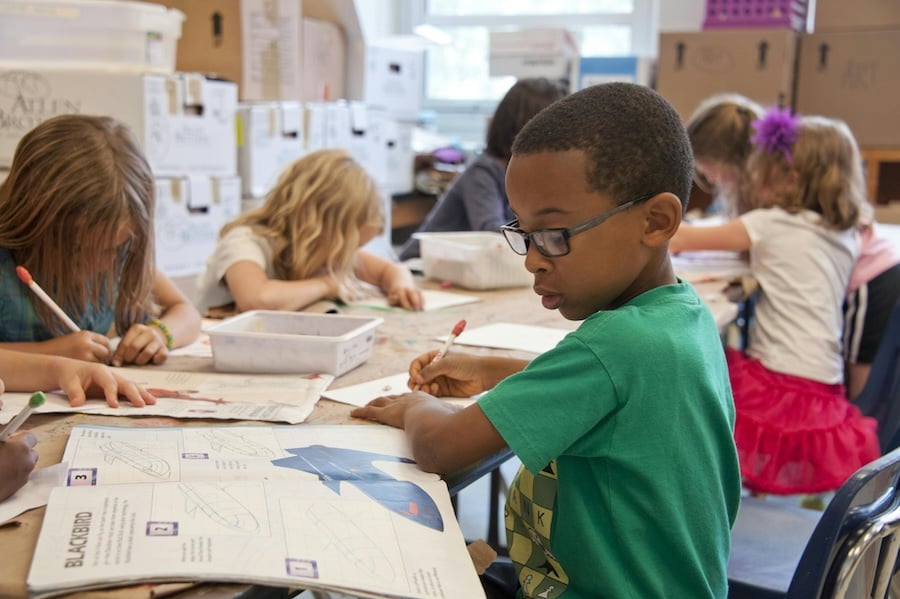In today’s classrooms, there is a growing recognition that success isn’t only measured in test scores. Educators, researchers, and parents are realizing that a child’s ability to navigate emotions, build relationships, and make responsible decisions directly impacts their academic growth.
This is where Social Emotional Learning (SEL) comes in—and why it matters more than ever.
Let’s explore the powerful connection between SEL and academic success, how it reduces behavioral challenges, and why every school benefits from centering emotional intelligence in its curriculum.
What Is SEL and Why SEL Matters?
Social Emotional Learning (SEL) is the process through which children (and adults) develop essential skills like self-awareness, self-regulation, empathy, and relationship building. These skills are foundational—not just for life success, but for thriving in the classroom.
When we ask “why SEL matters,” we’re really asking: What kind of learners—and what kind of humans—do we want to develop?
SEL matters because it addresses the whole child, recognizing that emotional health and academic achievement go hand in hand. It gives students the tools they need to stay focused, manage conflict, bounce back from failure, and contribute meaningfully to their community.
Visit our Social Emotional Learning homepage to see how SEL looks in real classrooms.
The Research: SEL and Academic Gains
According to a landmark meta-analysis from CASEL (Collaborative for Academic, Social, and Emotional Learning), students who participated in SEL programs showed an average 11 percentile-point gain in academic performance compared to peers who didn’t receive SEL instruction.
Additional findings include:
- Improved classroom behavior
- Better attitudes toward school
- Increased ability to manage stress and depression
- Higher graduation and college enrollment rates
When children feel emotionally safe, valued, and connected, they learn more. Emotional intelligence doesn’t distract from academics; it amplifies them.
Why SEL Reduces Behavioral Issues
When children lack the language or tools to express their emotions, those feelings often show up in disruptive or withdrawn behavior. SEL offers proactive tools, not reactive punishments.
With SEL:
- Students learn how to name their emotions, rather than act them out.
- Conflict becomes an opportunity to practice respectful communication.
- Classrooms shift from power struggles to partnerships.
By teaching students how to manage frustration, disappointment, or social tension, we reduce office referrals, suspensions, and missed learning opportunities. More time is spent teaching and connecting, and less time is spent correcting.
Explore how Tools of the Heart helps students manage big feelings and stay engaged.
The Link Between Emotional Safety and Learning
The brain is designed for survival first, learning second. If a child feels unsafe, anxious, or emotionally overwhelmed, their brain devotes energy to protecting them—not absorbing new information.
SEL supports:
- Predictability through classroom routines
- Security through trusting relationships
- Calm through emotional regulation tools
These conditions free the brain to focus on curiosity, exploration, and critical thinking. In short: SEL creates the conditions for learning to flourish.
Academic Skills Are Social-Emotional Skills
Many of the skills we label “academic” are actually deeply tied to social-emotional abilities:
| Academic Skill | SEL Competency That Supports It |
| Following directions | Self-management, social awareness |
| Completing assignments | Responsible decision-making, perseverance |
| Working in groups | Relationship skills, empathy |
| Asking for help | Self-awareness, confidence |
| Managing test anxiety | Self-regulation, emotional vocabulary |
When we strengthen SEL competencies, we also improve a child’s ability to engage academically.
How SEL Levels the Educational Playing Field
Not all students arrive at school with the same emotional toolkit. Factors like trauma, cultural differences, neurodiversity, or language barriers can influence how students express and manage emotions.
SEL provides an equitable foundation. It teaches every student—regardless of background or ability—how to:
- Advocate for their needs
- Recognize their own emotions and triggers
- Build positive relationships with peers and adults
- Make constructive choices in the face of conflict
When we teach SEL explicitly, we close opportunity gaps and foster an inclusive classroom culture.
Learn more about our Elementary SEL curriculum designed for diverse learners.
What SEL Looks Like in Action
At Soul Shoppe, we believe SEL should be woven into the rhythm of the school day—not a one-time lesson. Here’s what SEL looks like in real classrooms:
- Peace Corners, where students can cool down and reflect
- Morning circles, to check in emotionally and build connection
- Conflict resolution tools like the Peace Path
- Feelings posters that help children name and process emotions
- Class agreements that promote shared values and respect
When SEL is consistent, it becomes a shared language of growth.
SEL Isn’t an Extra—It’s Essential
So, why does SEL matter?
Because academic excellence and emotional intelligence are not in competition—they are partners. SEL gives students the tools to succeed not just on paper, but in life. It prepares them for the challenges of the world by teaching them how to understand themselves and connect with others.
If we want learners who are curious, confident, and compassionate—SEL is where we start.


